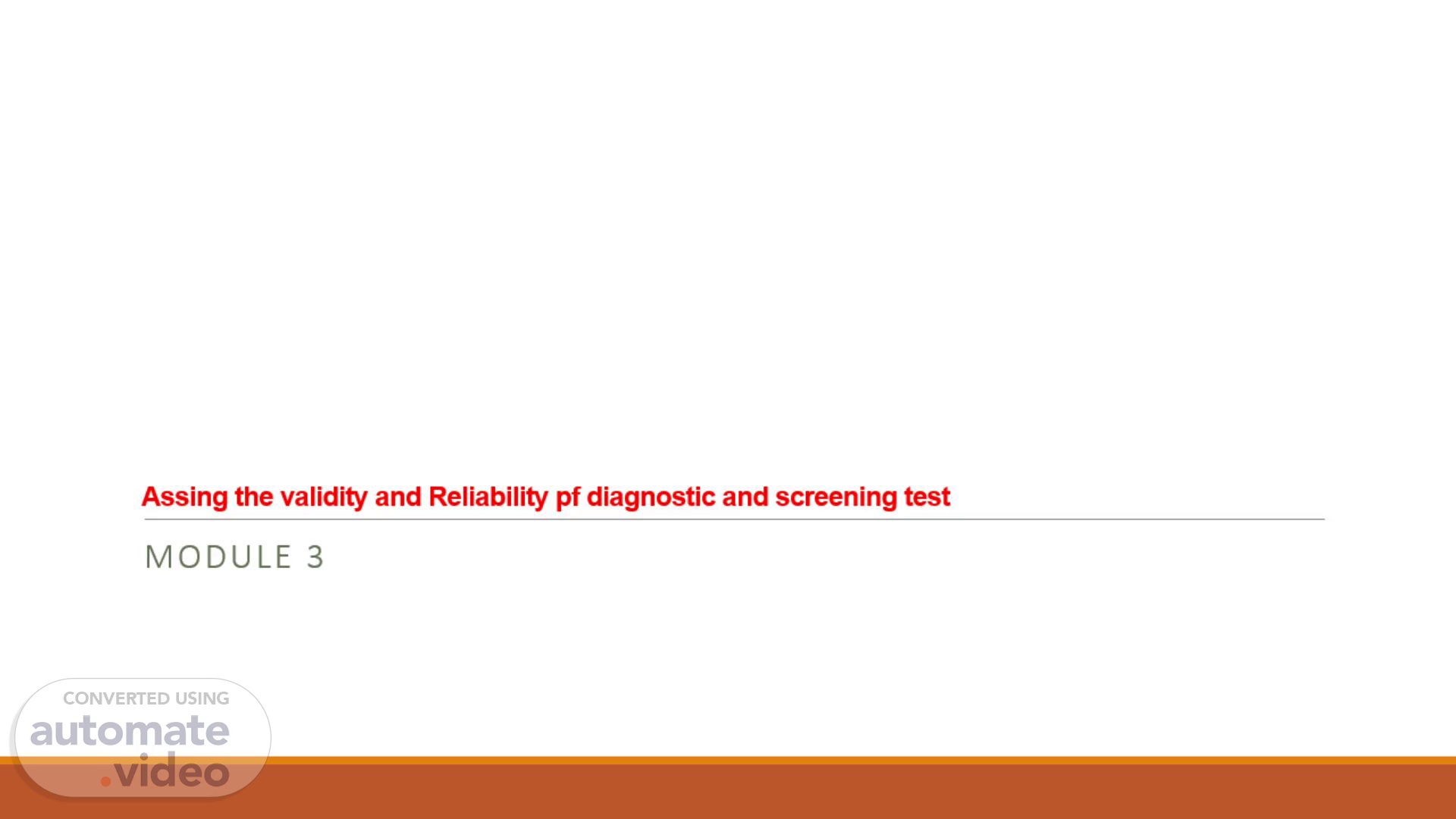
Assing the validity and Reliability pf diagnostic and screening test
Scene 1 (0s)
[Audio] Assing the validity and Reliability pf diagnostic and screening test Module 3.
Scene 2 (7s)
Validity. Validity refers to how well a test measures what it is supposed to measure—in this case, how accurately it detects disease..
Scene 3 (51s)
[Audio] Measure Definition Formula Sensitivity Ability of a test to correctly identify those with the disease True Positives True Positives plus False Negatives Specificity Ability of a test to correctly identify those without the disease True Negatives True Negatives plus False.
Scene 4 (1m 14s)
[Audio] Measure What it Tells You Formula Positive Predictive Value (P-P-V--) Probability that a person with a positive test truly has the disease TP / TP plus FP Negative Predictive Value (N-P-V--) Probability that a person with a negative test truly does not have the disease TN / TN plus FN.
Scene 5 (1m 40s)
[Audio] True or False 1. Validity is concerned with consistency, while reliability is about accuracy. 2. A test must be reliable to be valid. 3. High reliability always guarantees high validity. Answer: False Answer: True Answer: False.
Scene 6 (2m 3s)
[Audio] Reliability Reliability (or reproducibility) refers to the consistency of a test's results when repeated under similar conditions. High Sensitivity: Good for screening (few false negatives). High Specificity: Good for confirming diagnosis (few false positives). High Reliability: Results are consistent across testers and time..
Scene 7 (2m 31s)
[Audio] Practice Questions 1. Which of the following best defines reliability in a study tool? A The tool measures what it is intended to measure B The results are consistent and reproducible over time C The test measures different outcomes for different people D The test gives valid results under all conditions 2. 2. A thermometer gives the same temperature every time you measure, but the reading is 2 degrees celsius higher than the actual temperature. This means the thermometer is: A Reliable but not valid B Valid but not reliable C Both reliable and valid D Neither reliable nor valid Answer: B Answer :A.
Scene 8 (3m 24s)
[Audio] 3. Explain the difference between reliability and validity using an example from healthcare or epidemiology. Answer: Reliability refers to how consistent a blood pressure monitor is when taking repeated measurements. Validity refers to whether the monitor gives the true blood pressure value..